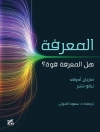English-Medium Instruction in Japanese Higher Education provides a touchstone for higher education practitioners, researchers and policy makers. It enables readers to more clearly understand why policies concerning English-medium instruction (EMI) are in place in Japan, how EMI is being implemented, what challenges are being addressed and what the impacts of EMI may be. The volume situates EMI within Japan’s current policy context and examines the experiences of its stakeholders. The chapters are written by scholars and practitioners who have direct involvement with EMI in Japanese higher education. They look at EMI from perspectives that include policy planning, program design, marketing and classroom practice.
Cuprins
Annette Bradford and Howard Brown: Introduction
Section 1: English-Medium Instruction in Context
Annette Bradford and Howard Brown: ROAD-MAPPING English-Medium Instruction in Japan Hiroko Hashimoto: Government Policy Driving English-Medium Instruction at Japanese Universities: Responding to a Competitiveness Crisis in a Globalizing World Bern Mulvey: Recent Government Policy and its Impact on English-Medium Instruction: Why this Time may be Different
Section 2: The Implementation of English-Medium Instruction in Japan
Hiroyuki Takagi: Development of English-Medium Instruction as a Key for Internationalizing Curricula in Japan Beverley Anne Yamamoto and Yukiko Ishikura: A Pebble that Creates Great Waves? Global 30 Classes and Internationalization of the Student Body
Section 3: Challenges and Solutions for English-Medium Instruction in Japan
Gregory Poole: Administrative Impediments: How Bureaucratic Practices Obstruct the Implementation of English-Taught Programs in Japan Hiroshi Ota and Kiyomi Horiuchi: How Accessible are English-Taught Programs? Exploring International Admissions Procedures Sarah Louisa Birchley: A Marketing Perspective on English-Medium Instruction at Universities in Japan
Section 4: The Student and Faculty Experience
Christopher G. Haswell: Accepting Neighboring Englishes: Investigating the Attitudes and Preconceptions of English-Medium Instruction Students at an International University in Japan Juanita Heigham: Center Stage but Invisible: International Students in an English-Taught Program Sae Shimauchi: Gender in English-Medium Instruction: Differences in International Awareness? Bernard Susser: A Tale of Two Classes: From EFL CBI to ELF EMI Miki Horie: Faculty Training for Non-Native Speakers of English at Japanese Universities: Effective English-Medium Teaching for a Culturally Diversified Student Population
Section 5: Curriculum Contexts
Bethany Mueller Iyobe and Jia Li: Factors for Success and Sustainability of an Elective English-Medium Instruction Program Jim Mc Kinley: Making the EFL to ELF Transition in English-Medium Instruction at a Global Traction University Nílson Kunioshi and Harushige Nakakoji: Features, Challenges and Prospects of a Science and Engineering English-Taught Program
Section 6: Future Directions for English-Medium Instruction
Akira Kuwamura: The Future of English-Medium Instruction in Japan Annette Bradford and Howard Brown: Final Thoughts: Have We Seen this Before? The Information Technology Parallel
Despre autor
Howard Brown is Associate Professor in the Faculty of International Studies and Regional Development, University of Niigata Prefecture, Japan. His research interests center on best practices for curriculum planning and program design in English-medium instruction, and the relationship between English-medium instruction and English for Academic Purposes.












